The canyon walls looked nearly vertical, so I was surprised when I saw something move along its surface. I pulled up my binocular and located a bighorn sheep, standing on a thin shelf of rock. How could a hoofed mammal have negotiated those steep canyon walls? The ewe looked like she barely had enough room to stand.
I could now pick out other bighorn sheep moving across the canyon. I saw the first ewe lift her leg. By the time I pulled my binoculars back to my eye, a small, wet lamb lay at her feet. She had just given birth. As I watched, transfixed, she licked the newborn.
I was in Yellowstone National Park on a busy June day. Nearby, people rushed on the road to see geysers and bears. I had this sighting – one of my most memorable – all to myself.
Bighorn sheep are incredible mammals. They can be readily viewed at many U.S. national parks and wildlife refuges – if you know where to look.
In our ongoing series on watching wildlife, here are some reliable places to look, as well as some information on the conservation issues faced by these animals.
Meet the Bighorn Sheep
Bighorn sheep are one of two wild sheep species found in North America. The Dall sheep – white or grayish in color – is found in Alaska and western Canada. Some people also confuse bighorns with mountain goats. The mountain goat (which, to further confuse things, isn’t a true goat) is white, often with a fluffy appearance, and has short, black horns.
Bighorns are found in western North America from Canada to Mexico. They are typically found in rugged habitat, including the Rocky Mountains and desert canyons. While accurate historical population estimates are difficult to find, some estimates place the 19th century population at 2 million animals.
Overhunting, habitat loss and competition with domestic livestock reduced their numbers to a low of 20,000. But modern conservation programs and reintroductions have helped. Several of the locations listed here consist of reintroduced populations that have been prospering for decades. Today, about 70,000 bighorns roam North America.
Bighorn sheep still significant threats. One of the biggest is diseases passed from domestic sheep. Bighorn sheep roam widely, which can bring them into contact with livestock and roads. Climate change can reduce desert springs; these springs provide critical water.
Large, connected habitats enable bighorns (and other wide-roaming wildlife) to be more resilient in the face of threats. That’s why connectivity has been such a focus of The Nature Conservancy’s work.
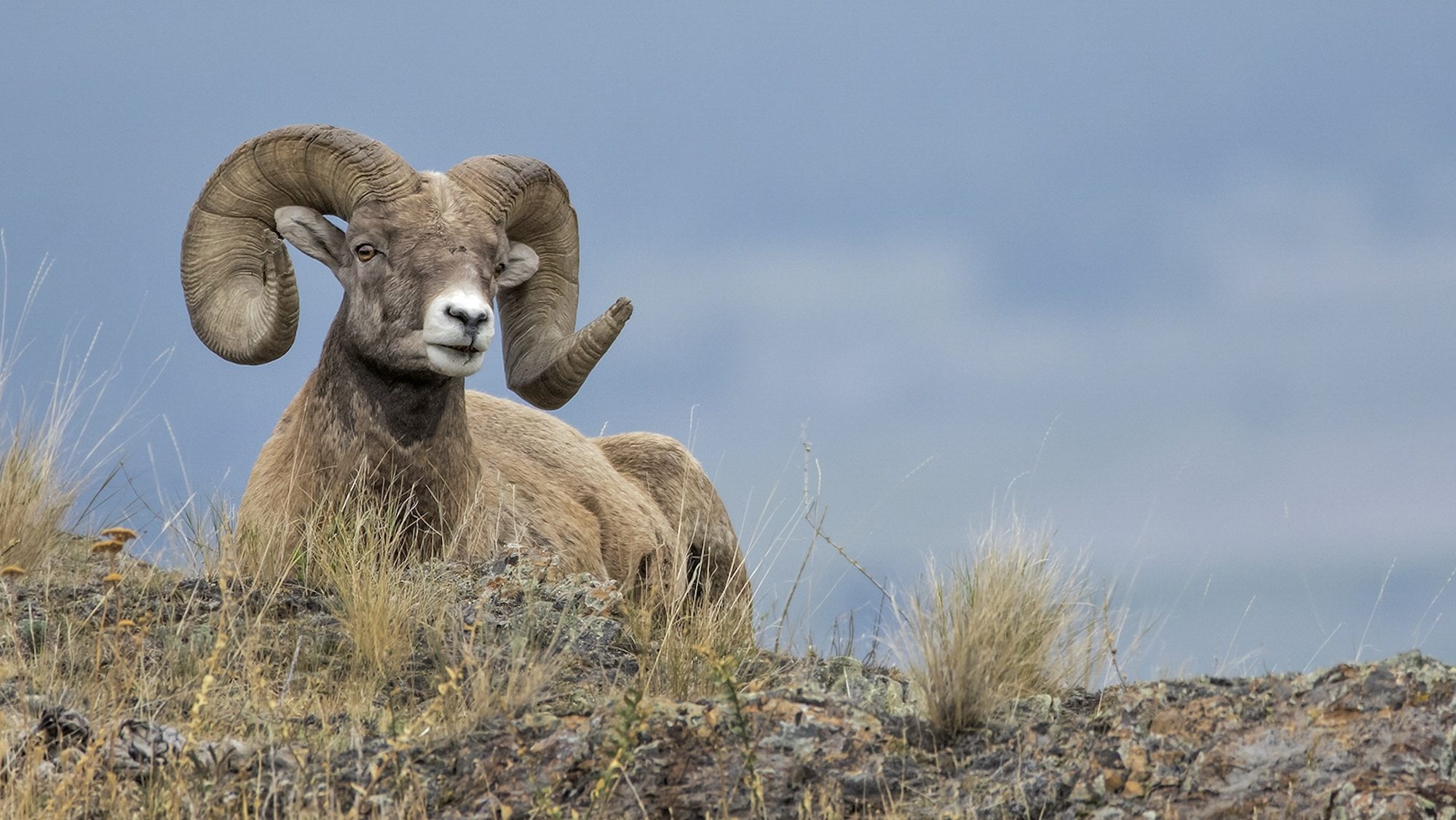
Yellowstone (Wyoming, Montana, Idaho)
Yellowstone National Park is, of course, known for its charismatic wildlife: bison, elk, black and brown bears and wolves. But many miss the bighorn sheep. That’s a shame, because the sheep’s cliff-scaling abilities make them one of the more exciting animals to watch.
You can sometimes see them on the trail to Mount Washburn, the highest point in the park (and a great hike). A better spot are the rocky cliffs between Tower and Roosevelt. There are ample vehicle pull-offs. Scan the cliffs (no matter how steep) for movement or anything out of place. Sometimes the bighorns are standing on the rim, but more often you will see them picking their ways across the ledges of the cliff faces.
You can also see bighorns in areas surrounding the park. One of my best sightings was three magnificent rams below Hebgen Lake in the Madison River valley. Wildlife doesn’t follow national park boundaries, making private land easements and road crossings so vital for their continued survival.
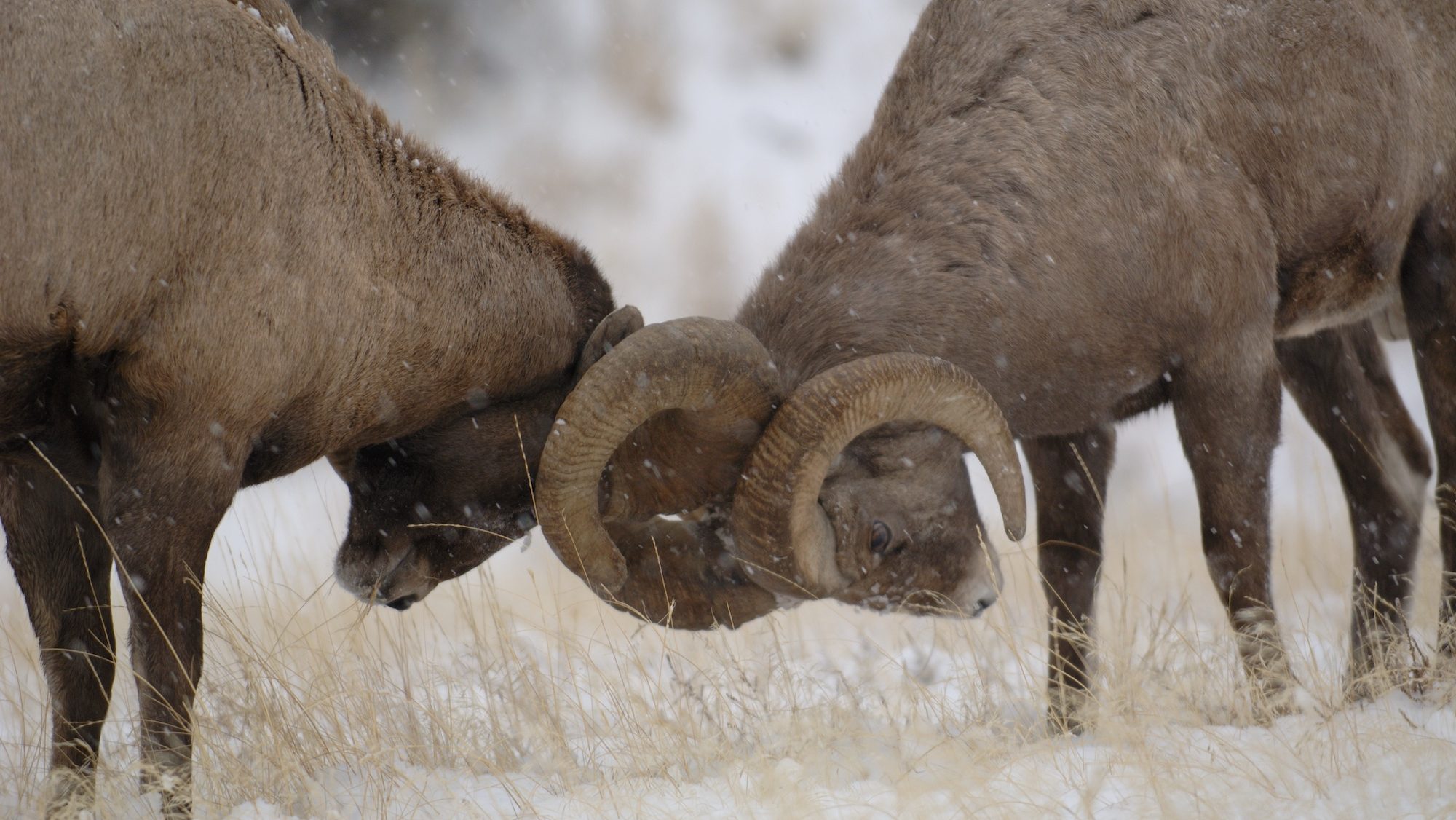
Owyhee Canyonlands (Idaho, Oregon)
Here’s a more off-the-beaten path destination: the Owyhee country that occupies the southwestern corner of Idaho and southeastern Oregon. With a low human population, lots of public lands and stunning desert canyons, it’s a great place to explore the sagebrush-steppe habitat and its wildlife.
California bighorn sheep roam in many of the canyons here. I’ve seen them in the Leslie Gulch area of Oregon as well as the remote Idaho canyons like Deep Creek and Big Jacks Creek.
This includes areas designated as wilderness due to work of the Owyhee Initiative, a collaborative effort that included ranchers, the Shoshone-Paiute Tribes, recreational groups and conservation NGOs including The Nature Conservancy. These wilderness areas provide connected habitat for the bighorns.
Seeing them here is not easy, but you’ll be rewarded with other wildlife sightings and the experience of spending time in one of the least developed regions of the United States.
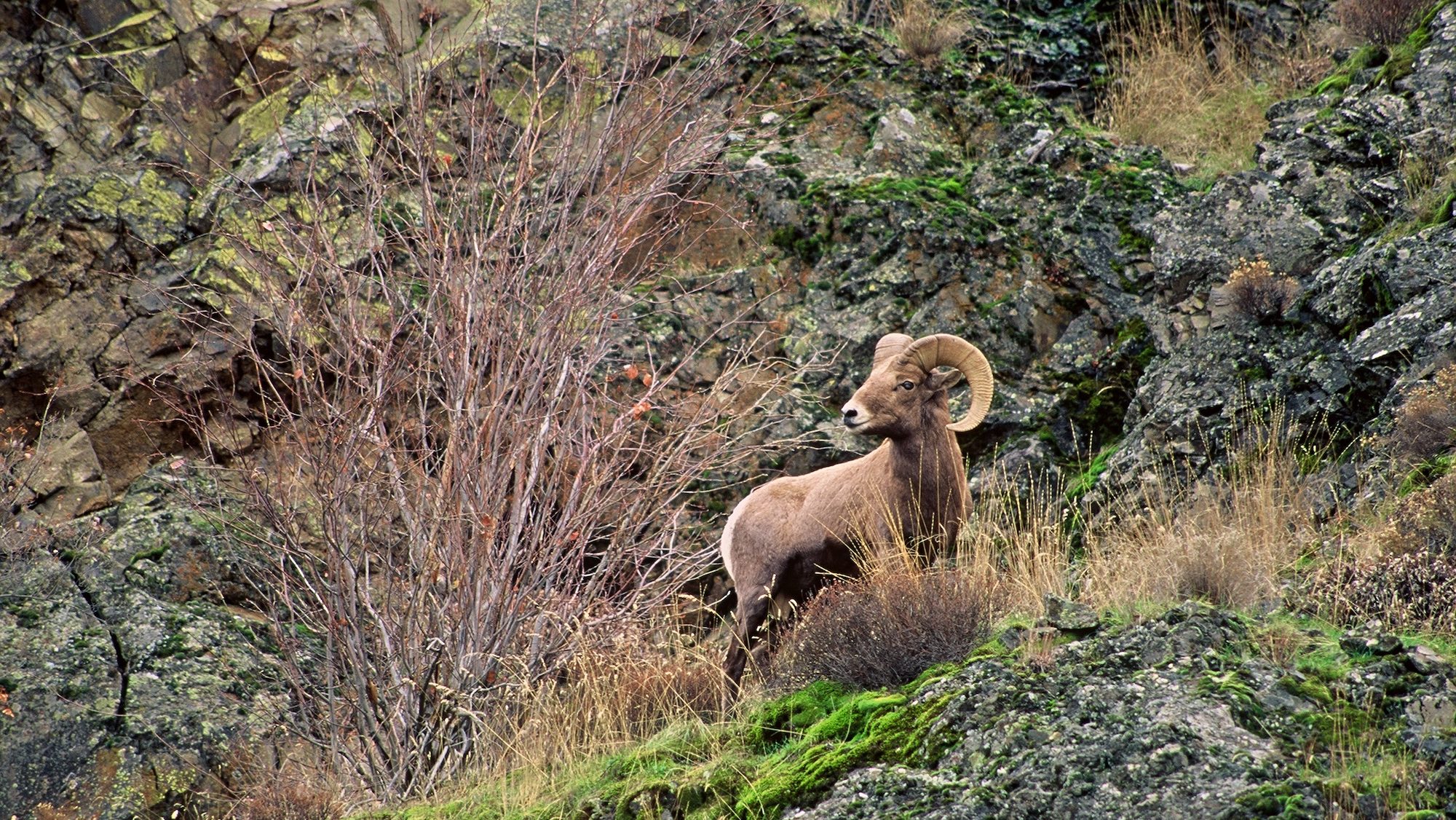
Hells Canyon (Idaho, Oregon, Washington)
Hells Canyon – formed by the Snake River as it goes through Idaho, Oregon and Washington – is the deepest canyon in North America. It’s home to a diversity of wildlife, including bighorn sheep.
On the Idaho side, Craig Mountain Wildlife Management Area and Garden Creek Preserve – both protected in part thanks to acquisitions by The Nature Conservancy – offer great foot access. Just watch out for rattlesnakes.
For the less adventurous, jet boat tours offer an easier way to see bighorn sheep, who come down to the Snake River to drink.
Muellar Ranch (Colorado)
When he visited Muellar Ranch in 1901, President Theodore Roosevelt – certainly someone not usually at a loss for words, exclaimed the scenery was ““such as to bankrupt the English language!” When the property was threatened with development, The Nature Conservancy acquired it in 1978.
Today, it is divided into two public properties, Muellar State Park and Dome Rock State Wildlife Area (the latter requires a Colorado hunting or fishing license to visit). Both are good places to see bighorn sheep, as well as a host of other charismatic wildlife.
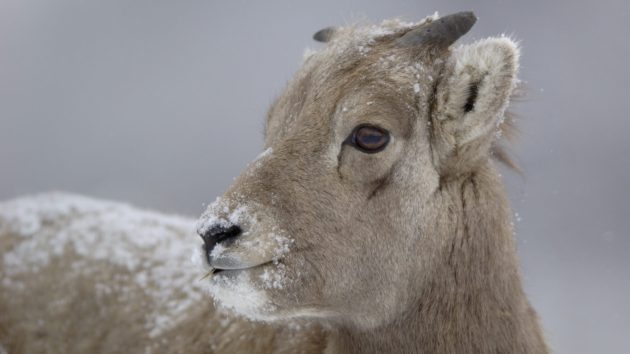
Desert National Wildlife Refuge (Nevada)
Desert National Wildlife Refuge is an area designated (in 1937) specifically to protect habitat for desert bighorn sheep. It’s also the largest national wildlife refuge outside of Alaska, so finding the sheep is not always easy. Some of the roads in the refuge require four-wheel-drive, and even then the U.S. Fish and Wildlife Service warns of washouts, tire-shredding rocks and other hazards.
So this is not a destination for the casual wildlife viewer. But it is a chance to explore the most intact wild sheep habitat in the Mojave Desert.
The refuge’s web site includes a helpful guide to finding desert bighorn sheep, including the most reliable locations along all the refuge’s main roads and some easier-to-access spots off the refuge.
Badlands National Park (South Dakota)
The Badlands of South Dakota historically represented one of the easternmost populations of bighorn sheep. The animals were extirpated from this habitat, but beginning in 1922, conservationists began restoring them.
Today, about 250 bighorns roam the national park. Although an isolated habitat, they do not face the threats of predators that impact many bighorn populations today. Predation is natural, of course. But many bighorn populations are now isolated. Isolated populations become “islands” and are less resilient to normal factors like predation.
Bighorns in the Badlands can often be seen in rocky areas along the main driving route through the park.

Zion National Park
Desert bighorn sheep were reintroduced to Zion National Park in 1978. Initially, park managers though that the effort had failed. But that wasn’t the case: the bighorns were merely in more remote parts of the park.
Today, they are thriving, with 500 animals. They can often be seen from the road. The National Park Service recommends the area between the Zion-Mount Carmel Tunnel and the East Entrance.
The bighorns are doing so well that it has caused some concerns with conservationists. The National Park Service explains:
“Bighorn have done so well in Zion that now wildlife biologists are concerned about the high population density. One major concern is that as bighorn spread out to new territory, they have a greater chance of contact with domestic sheep and goats, which can spread diseases fatal to wild bighorn.”
Again, wildlife doesn’t adhere to park boundaries.
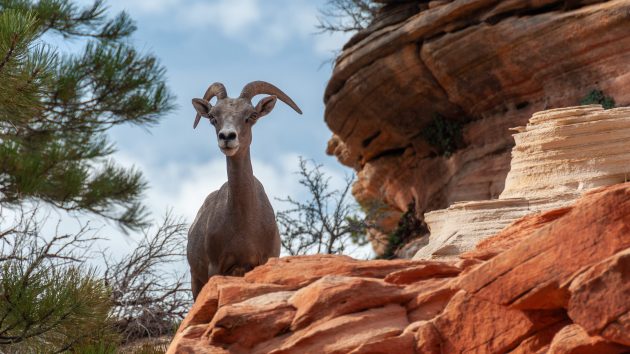
Other National Parks and Public Lands
It’s always a good idea to check out the wildlife lists (or iNaturalist) for any national park or public land you’re visiting. Many visitors are just there for the scenery. You might be surprised at the wildlife you can see at places best known for their vistas.
Take the Grand Canyon, for instance. I’ve heard people say that you don’t go there for the wildlife. But on two brief visits, I’ve seen bison, mule deer and, yes, bighorn sheep, as well as a number of interesting smaller mammals and birds.
If bighorn sheep are on the park list, check out the rocky slopes and canyons of the park you’re visiting. I’ve seen them in parks as seemingly different as Glacier National Park in Montana and Joshua Tree National Park in desert California.
As with any wildlife viewing, you see more if you’re looking. Many people drive on by a mountainside, never knowing there’s a herd of bighorns there. Look closely, even if it looks too steep for large mammals. You might be rewarded with the chance to observe one of the most charismatic North American hoofed mammals.
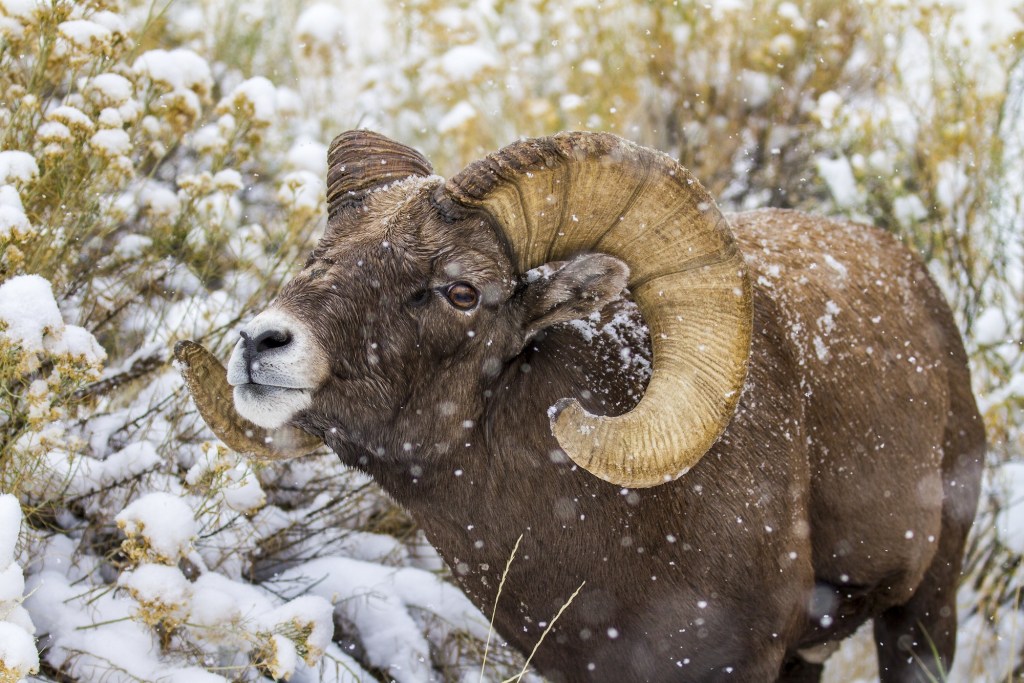



Great article as usual Matt. Thanks!!